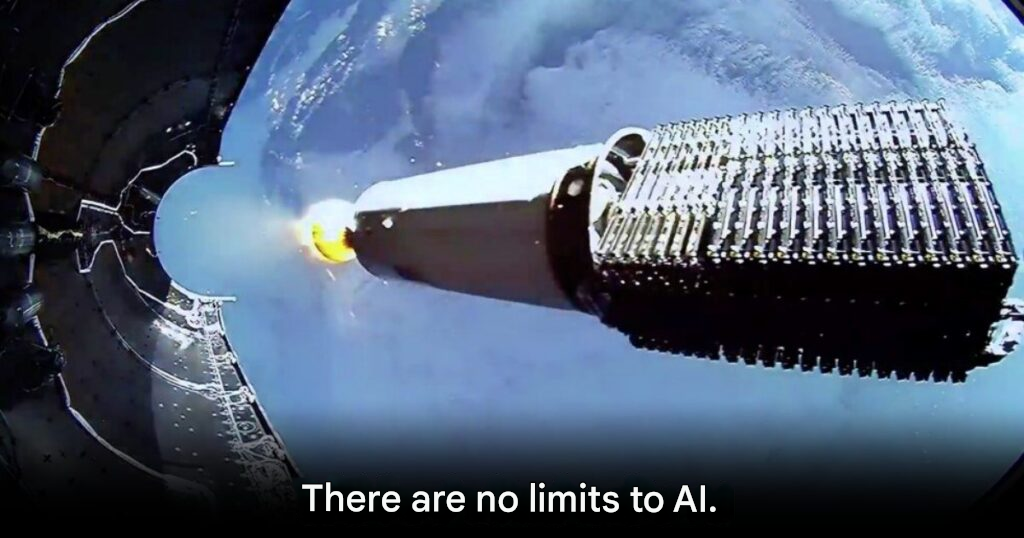
After years of talking about the ubiquitous adoption of artificial intelligence, Google has taken it to a new level by announcing Project Suncatcher, which aims to build a sky data center to process AI based directly on the sun’s energy. The project is part of an effort to expand machine computing into space. To solve the problem of enormous energy consumption on Earth.
The main idea is to send a swarm of small satellites into low Earth orbit. Each is equipped with a Tensor Processing Unit, or TPU, chip, which is Google’s specialized hardware for AI tasks such as content creation, audio and image synthesis, and advanced deep learning. These chips are connected to each other via a light-speed laser interconnect. This makes the entire system work like a giant data center floating above the ground.
Google CEO Sundar Pichai stated in a post on X that the project is a moonshot that faces many engineering challenges, such as thermal management. But ground tests have shown that the Trillium series TPU chips can withstand low orbit radiation levels without damage.

The key highlight of moving data centers into space lies in energy and environmental efficiency. On Earth, data centers for AI consume enormous amounts of energy. It is expected to be equivalent to 22 percent of U.S. household electricity consumption by 2028. In space, these problems are greatly reduced, as solar energy is infinite and heat can be radiated into the void, generating it directly through the radiation panels.
These satellites will orbit in a special path called the Terminator Orbit, which is located around the line between day and night, to receive continuous sunlight without relying on batteries. Solar panels in space also produce eight times more energy than on Earth because there is no atmosphere to block the sun’s rays, making the system most efficient.
To test this idea, Google partnered with Planet Labs to create two prototype satellites. It is expected to launch into orbit in early 2027 to verify the intersatellite laser communication system and the performance of TPU chips in real conditions. If successful, This project could revolutionize AI processing from servers on the ground to the computing center of the universe that are powered by solar and optical communications.
origin: Arstechnica





